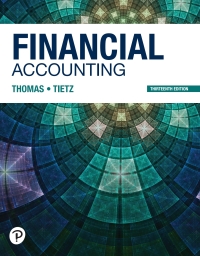LO 4-1, LO 4-2, LO 4-3, LO 4-4 4.24 Calculating and Interpreting Profitability Ratios. Hasbro is a leading firm in the toy, game, and amusement industry. Its promoted brands group includes products from Playskool, Tonka, Milton Bradley, Parker Brothers, Tiger, and Wizards of the Coast. Sales of toys and games are highly variable from year to year depending on whether the latest products meet consumer interests. Hasbro also faces increasing competition from electronic and online games. Hasbro develops and promotes its core brands and manufactures and distributes products created by others under license arrangements. Hasbro pays a royalty to the creator of such products. In recent years, Hasbro has attempted to reduce its reliance on license arrange- ments, placing more emphasis on its core brands. Hasbro also has embarked on a strategy of reducing fixed selling and administrative costs in an effort to offset the negative effects on earnings of highly variable sales. Exhibit 4.30 presents the balance sheets for Hasbro for the Exhibit 4.30 Hasbro Balance Sheets (amounts in millions) (Problem 4.24) Year 2 Year 1 Year 4 Year 3 ASSETS Cash Accounts receivable Inventories Prepayments Total Current Assets $ 725 579 195 219 $1,718 $ 521 607 169 212 $1,509 $ 496 555 190 191 $1.432 $ 233 572 217 346 $1,368 (Continued 252 CHAPTER years ended December 31, Years 1 through Exhibit 431 presents the income statements and Ethibit 4:32 presents the statements of cash flows for Years 2 through 4. Exhibit 4.30 (Continued) 207 200 1316 1.454 53.241 $3,163 213 1.498 $3,143 236 1,765 $3,369 Property, plant, and equipment, net Other assets Total Assets LIABILITIES AND SHAREHOLDERS' EQUITY Accounts payable Short-term borrowing Other current liabilities Total Current Liabilities Long-term debt Other noncurrent liabilities Total Liabilities Common stock Additional paid-in capital Retained earnings Accumulated other comprehensive income (loss) Treasury stock Total Shareholders' Equity Total Liabilities and Shareholders' Equity $ 168 342 639 $1,149 303 149 $1,601 $ 105 381 1.721 82 $ 159 24 747 $ 930 687 141 $1,758 $ 105 398 1,567 30 $ 166 223 578 $ 967 857 128 $1,952 $ 105 458 1,430 (47) $123 36 599 $ 758 1,166 92 $2.016 $ 105 455 1,622 (68) (649) $1,640 $3.241 (695) $1,405 $3,163 (755) $1,191 $3,143 (761) $1,353 $3,369 Exhibit 4.31 Hasbro Income Statements (amounts in millions) (Problem 4.24) Year 4 Year 3 Year 2 $ 2,998 (1.252) $ 3,139 (1.288) $ 2,816 (1,099) Sales Cost of goods sold Selling and administrative expenses: Advertising Research and development Royalty expense Other selling and administrative (387) (157) (223) (687) (364) (143) (248) (799) (297) (154 (296) (788) (Continued Exhibit 4.31 (Continued) Interest expense Income tax expense Net Income (32) (64) $ 196 (53) (69) $ 175 (78) (29) 75 $ Exhibit 4.32 Hasbro Statements of Cash Flows (amounts in millions) (Problem 4.24) Year 4 Year 3 Year 2 $196 146 17 76 (16) 29 (90) $358 $ 175 164 68 (13) 35 8 17 $ 454 $ 75 184 (67) 34 39 185 23 $ 473 $ (79) (6) $ (85) $ (63) (2) $ (65) $ (59) (3) $ (62) OPERATIONS Net Income Depreciation and amortization Addbacks and subtractions, net (Increase) Decrease in accounts receivable (Increase) Decrease in inventories (Increase) Decrease in prepayments Increase (Decrease) in accounts payable and other current liabilities Cash Flow from Operations INVESTING Property, plant, and equipment acquired Other investing transactions Cash Flow from Investing FINANCING Increase in common stock Decrease in short-term borrowing Decrease in long-term borrowing Acquisition of common stock Dividends Other financing transactions Cash Flow from Financing Change in Cash Cash-Beginning of year Cash-End of Year $ 40 $ 3 (7) (58) $ 3 (15) (127) (37) 7 $ (69) $204 521 $725 (389) (3) (21) 9 $(364) $ 25 496 $ 521 (21) 12 $(148) $ 263 233 $ 496









